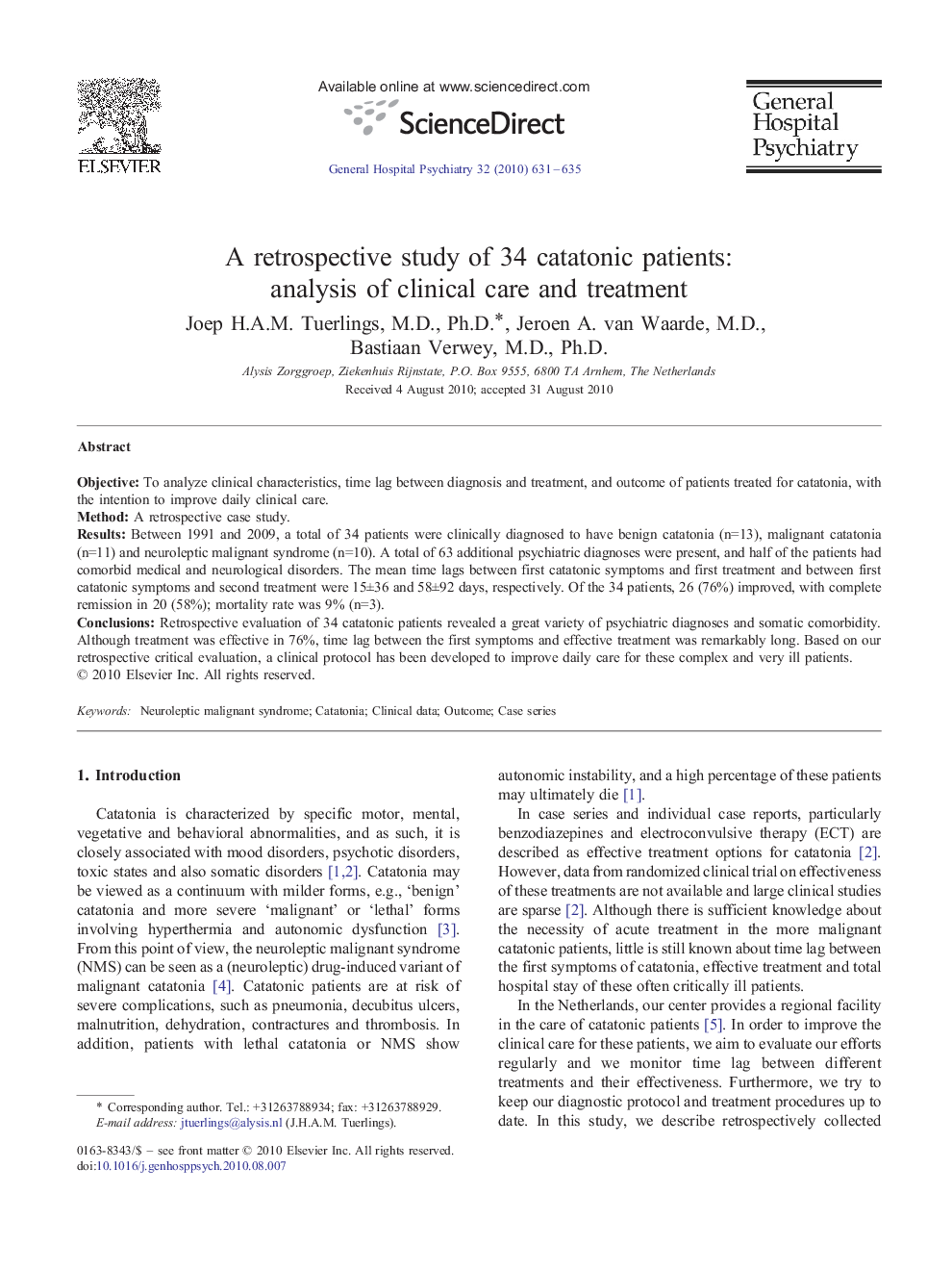| Article ID | Journal | Published Year | Pages | File Type |
|---|---|---|---|---|
| 3237894 | General Hospital Psychiatry | 2010 | 5 Pages |
ObjectiveTo analyze clinical characteristics, time lag between diagnosis and treatment, and outcome of patients treated for catatonia, with the intention to improve daily clinical care.MethodA retrospective case study.ResultsBetween 1991 and 2009, a total of 34 patients were clinically diagnosed to have benign catatonia (n=13), malignant catatonia (n=11) and neuroleptic malignant syndrome (n=10). A total of 63 additional psychiatric diagnoses were present, and half of the patients had comorbid medical and neurological disorders. The mean time lags between first catatonic symptoms and first treatment and between first catatonic symptoms and second treatment were 15±36 and 58±92 days, respectively. Of the 34 patients, 26 (76%) improved, with complete remission in 20 (58%); mortality rate was 9% (n=3).ConclusionsRetrospective evaluation of 34 catatonic patients revealed a great variety of psychiatric diagnoses and somatic comorbidity. Although treatment was effective in 76%, time lag between the first symptoms and effective treatment was remarkably long. Based on our retrospective critical evaluation, a clinical protocol has been developed to improve daily care for these complex and very ill patients.
